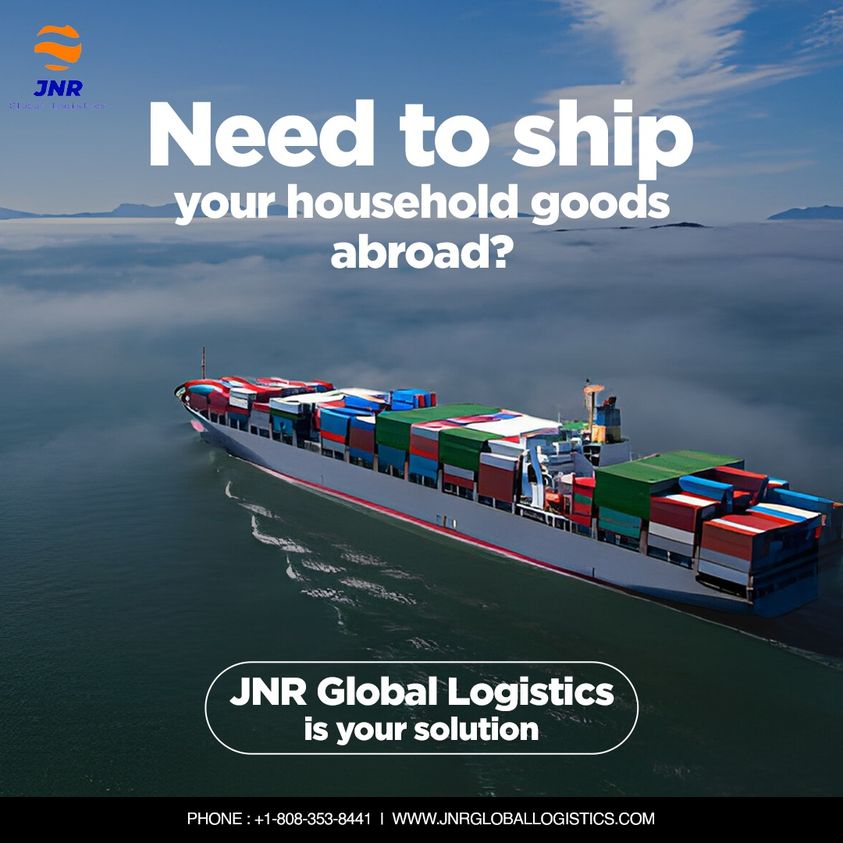Tag: shipping household goods internationally
Main Aspects Of Shipping Household Goods Internationally – A General Overview
Delivering household goods globally includes a mind-boggling process that requests fastidious preparation and adherence to different guidelines. Whether you are migrating to another nation or sending assets to household abroad, understanding the fundamental parts of global transportation is critical. This far reaching outline will dive into the critical contemplations and steps engaged with delivery household merchandise across borders.
Customs Guidelines and Documentation
One of the primary challenges in global shipping is navigating the complicated maze of customs regulations. Every country has its set of rules governing the importation of goods, and compliance is paramount to ensure a smooth process. The documentation typically required for Shipping Household Goods Internationally includes a detailed inventory of items being shipped, packing records, and sometimes certificates of origin or other specific documents depending on the destination.
Understanding the specific customs and requirements of the destination country is crucial. Some countries have strict regulations on certain items, such as restricted or prohibited goods, and failure to comply can result in delays, fines, or even seizure of the goods. Engaging with a customs broker or seeking advice from experienced international shipping professionals can be immensely helpful in navigating this complex aspect.
Packaging and Labeling
Proper packaging and labeling are essential to safeguard household goods during transit and comply with international shipping regulations. Packaging requirements may vary based on the mode of transportation (air, sea, or land) and the fragility of the items. For example, delicate items may require additional padding and specialized packaging to prevent damage during handling.
Clear and accurate labeling is crucial for Shipping To Hawaii From Mainland or other destinations. Labels should include information such as the recipient’s name and address, the destination country, and handling instructions. Adhering to international shipping regulations for sea freight ensures that packages are handled appropriately and reach their destination intact.
Method of Transportation
Choosing the right method of transportation is a pivotal decision in global shipping. The three primary options are air freight, sea freight, and land transportation. Each mode has its advantages and limitations, and the choice depends on factors like budget, time constraints, and the volume of goods being shipped.
Air Freight: Quick and efficient air freight is suitable for smaller shipments or those requiring expedited delivery. It will be more expensive than other options.
Sea Freight: Ideal for large shipments and bulkier items, sea freight is a cost-effective choice, but it involves longer travel times. It requires meticulous planning due to schedules and anticipated delays.
Land Transportation: Land transportation may be a suitable option for shipments within a continent or adjacent countries. It offers a balance between cost and speed, especially for regional movements.
Insurance Coverage
Shipping household goods internationally entails inherent risks, including damage, loss, or theft. Obtaining comprehensive insurance coverage is essential to mitigate these risks and provide peace of mind. Many shipping companies offer insurance options, and it’s crucial to carefully review the coverage details and terms before selecting.
Insurance should cover the full value of the goods being shipped, including any additional costs incurred in the event of damage or loss. Understanding the claims process and documentation required for filing a claim is equally important, as prompt and accurate reporting is essential to getting reimbursed
Local Support and Delivery Solutions
Enforcing support solutions from local vendors when shipping a significant consignment is important. There should be no compromise at any stage. When you consult top moving experts from the industry, you can be sure of the desired results. There will be no hassles.
Understanding the local rules and procedures at the destination is crucial to avoid any delays or confusion during the final delivery stages. Some countries may have specific requirements or restrictions, and working with professionals familiar with the local landscape can streamline the process.
Optimal Estimation of the Budget
International shipping costs can vary significantly based on factors like the method of transportation, distance, volume of goods, and additional services required. Creating a realistic budget and obtaining accurate quotes from shipping providers are essential steps in planning an international move.
Determining the transportation costs, customs duties, fees, insurance payments, and any required destination services is crucial. Neglecting these factors can lead to unexpected expenses, impacting the overall smoothness of the international shipping process.
Final Note
All in all, shipping household goods internationally is a diverse process that requires meticulous planning and adherence to various regulations. From navigating customs regulations to choosing the right method of transportation and ensuring proper packaging, each aspect plays a significant role in the outcome of an international shipment.
By understanding and addressing these fundamental aspects, individuals and businesses can navigate the complexities of international shipping with confidence. Seeking professional guidance, staying informed about destination-specific requirements, and carefully planning each step contribute to a seamless and successful international shipping experience for moving household goods across borders.


